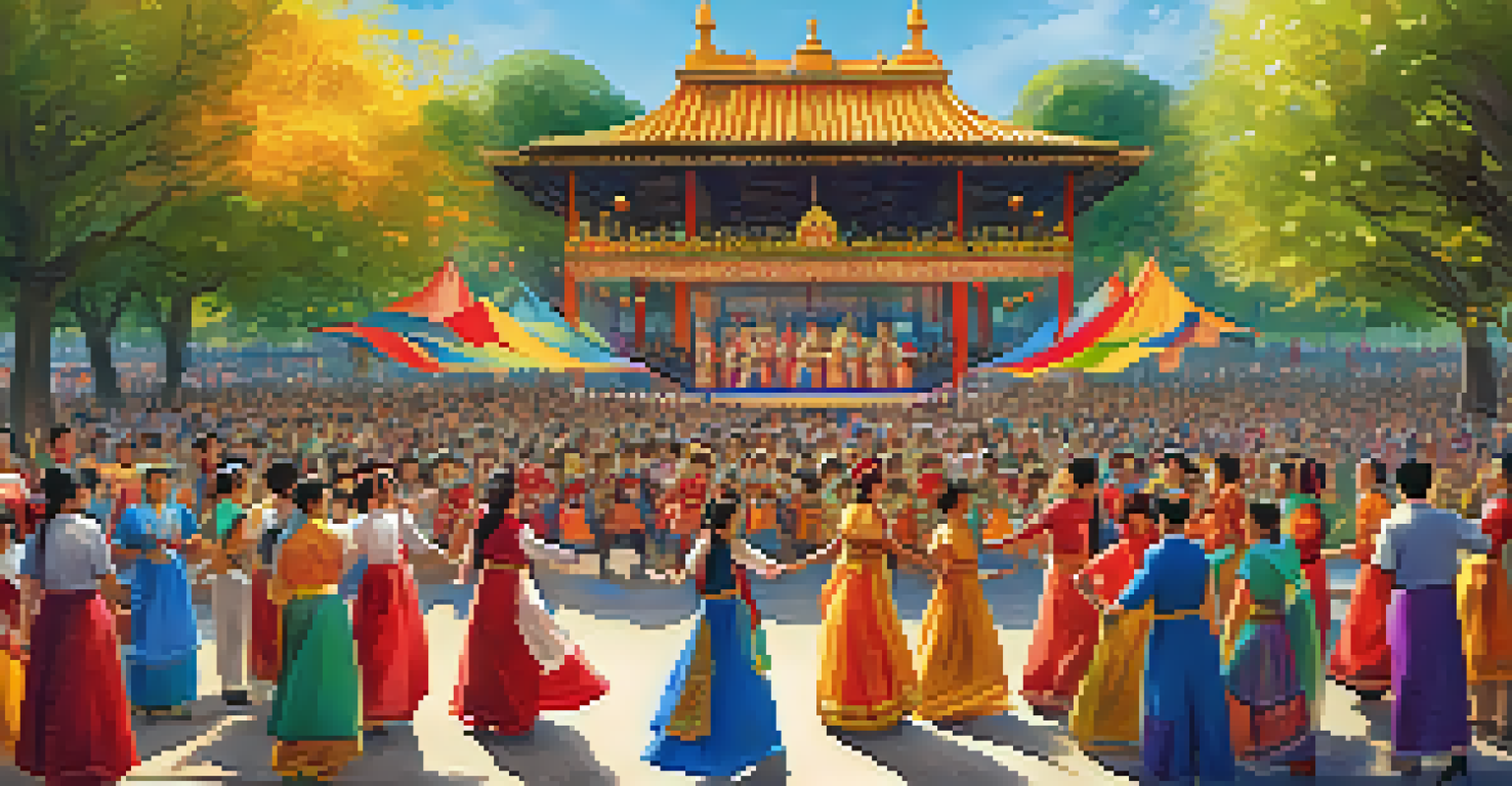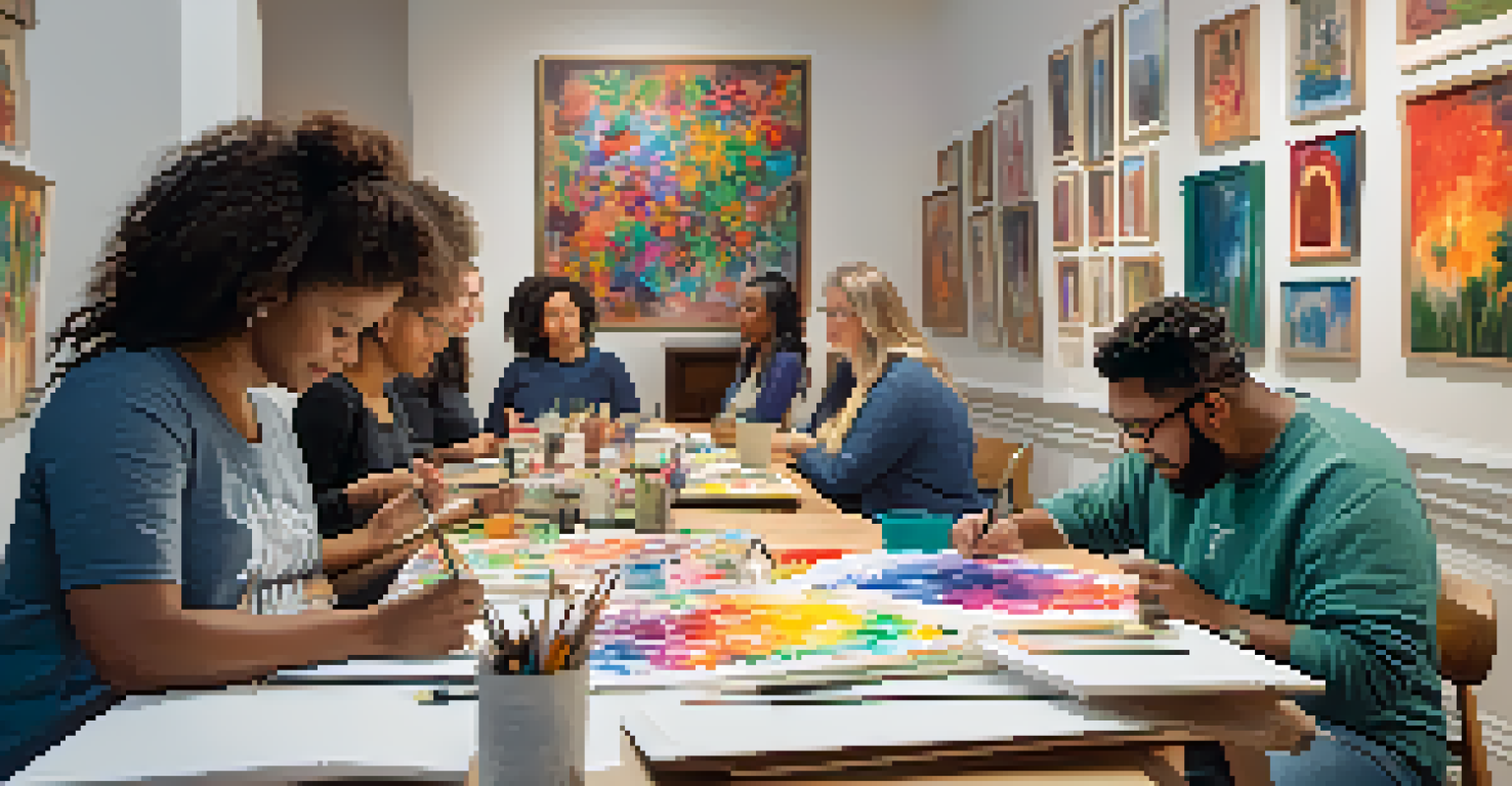The Role of Art and Culture in Community Health Initiatives

Understanding Community Health Initiatives and Their Importance
Community health initiatives are programs designed to improve the health and well-being of a specific group of people. They often address issues such as access to healthcare, nutrition, and mental well-being. By focusing on the unique needs of a community, these initiatives aim to create a healthier environment for everyone involved.
Art is not what you see, but what you make others see.
The importance of these initiatives cannot be overstated. They not only provide essential resources and support but also foster a sense of belonging and empowerment among community members. When people feel involved and valued, they are more likely to participate in programs that promote health and well-being.
By integrating art and culture into these initiatives, we can further enhance their effectiveness. The creative expressions found in art and culture can serve as powerful tools to engage individuals, inspire change, and promote a deeper understanding of health issues.
Art as a Tool for Expressing Health Challenges
Art serves as a universal language, offering a means for individuals to express their health challenges. Whether it's through painting, music, or dance, creative outlets help people articulate their experiences in ways that words sometimes cannot. This expression can be especially powerful in communities facing stigma or discrimination related to health issues.

For instance, community art projects often encourage participants to share their stories, providing insights into the specific health challenges they face. This not only fosters empathy among community members but also raises awareness about the importance of addressing these challenges collectively. By showcasing these stories through art, communities can spark conversations and drive action.
Community Health Boosts Well-Being
Community health initiatives enhance well-being by addressing local needs and fostering a sense of belonging among members.
Moreover, art can challenge perceptions and break down barriers. When individuals see their experiences depicted in a relatable way, it can validate their feelings and encourage them to seek help and support, thereby enhancing overall community health.
Cultural Activities Promote Mental Well-Being
Engaging in cultural activities has been shown to significantly improve mental well-being. Activities such as traditional dance, music, and storytelling not only celebrate heritage but also create a sense of belonging and community. This is crucial, especially for marginalized groups who may feel isolated or disconnected.
Culture is the widening of the mind and of the spirit.
Participating in these cultural expressions can provide individuals with a sense of purpose and fulfillment. For example, community festivals that highlight local traditions can boost morale and encourage social interaction, which is vital for mental health. The joy of sharing cultural practices can be therapeutic and uplifting for many.
Additionally, these activities often foster resilience, allowing individuals to cope better with stress and adversity. By embedding cultural practices in community health initiatives, we promote mental well-being in a way that is both enjoyable and meaningful.
Art Therapy as a Community Health Resource
Art therapy has emerged as a valuable tool in community health, providing therapeutic benefits through creative expression. This form of therapy can help individuals process emotions, especially in communities grappling with trauma or loss. By channeling feelings into art, participants can find healing and recovery.
Many community health initiatives now incorporate art therapy workshops, where individuals can explore their feelings in a supportive environment. These sessions not only enhance individual well-being but also strengthen community bonds as participants share their experiences and support one another. This collective healing can be transformative.
Art Enhances Health Communication
Art serves as a powerful medium to express health challenges, raise awareness, and promote understanding within communities.
Research has shown that art therapy can reduce symptoms of anxiety and depression, making it a vital resource in community health settings. By recognizing the therapeutic value of art, communities can empower individuals to take charge of their mental health and well-being.
Building Social Connections Through Cultural Events
Cultural events play a crucial role in fostering social connections within communities. These gatherings, whether they are art exhibitions, music festivals, or cultural fairs, bring people together and encourage interaction. Strong social networks are essential for maintaining mental and physical health.
When individuals participate in cultural events, they often find common ground with others, creating friendships and support systems. This sense of community can be especially beneficial for those who may feel lonely or disconnected, as it provides opportunities for engagement and connection.
Moreover, these events can serve as platforms for sharing valuable health information. By integrating health resources into cultural programming, communities can effectively disseminate important information while simultaneously celebrating their heritage.
Art and Culture in Health Education and Awareness
Art and culture can significantly enhance health education and awareness efforts. Through visual campaigns, theater productions, and interactive exhibits, communities can convey important health messages in engaging and relatable ways. This creative approach often resonates more deeply than traditional educational methods.
For example, a mural depicting healthy lifestyle choices can draw attention and spark conversations about nutrition and exercise. Similarly, performances that address public health issues can entertain while educating audiences about critical topics like mental health and substance abuse.
Cultural Events Strengthen Connections
Cultural activities and events foster social connections that are vital for mental and physical health, while also sharing important health information.
By using art and culture as educational tools, communities can foster a more informed populace. This engagement can lead to more proactive health behaviors and greater involvement in community health initiatives.
Measuring the Impact of Art and Culture on Community Health
Evaluating the impact of art and culture on community health initiatives is essential for understanding their effectiveness. Gathering data on participation rates, health outcomes, and community engagement can provide valuable insights into what works and what doesn't. This information can guide future programs and initiatives.
Qualitative feedback, such as personal stories and testimonials, can also shed light on the emotional and social benefits of integrating art and culture into health initiatives. These narratives can illustrate the profound impact these programs have on individuals and communities, beyond just the numbers.

By combining quantitative and qualitative measures, communities can create a comprehensive picture of the impact of art and culture on health. This approach not only validates the importance of these initiatives but also helps secure funding and support for future projects.